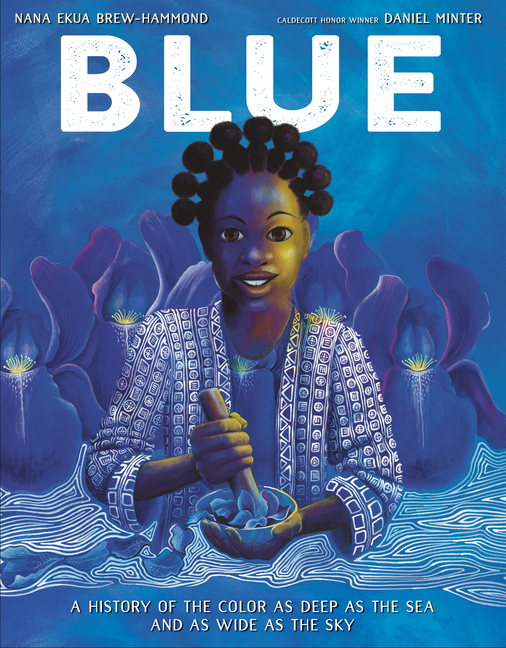Book Description
for Blue by Nana Ekua Brew-Hammond and Daniel Minter
From Cooperative Children's Book Center (CCBC)
Do colors have histories? Brew-Hammond reveals that blue most certainly does. Although people have always been able to see the color blue in the sky, lakes, and oceans, recreating blue is another matter. The earliest known use of blue was in 4500 BC when miners in Afghanistan extracted a blue rock, lapis lazuli, from the ground. Because it was both difficult to extract and to turn into paint, blue was prized in ancient Egypt, where it became associated with wealth and royalty. Elsewhere in the world—the Mediterranean, Japan, Central America, and Mexico—people learned to extract blue from a particular type of snail, another painstaking process. Once a group of plants called Indigofera, found in parts of Asia, Africa, the Caribbean, and the Americas, was discovered, blue became cheaper to produce but was still precious; people throughout the world, including the United States, were exploited and enslaved to grow and harvest it in this “evil side of the trade for blue.” After working in his lab for 40 years, scientist Adolf von Baeyer won the Nobel Prize in 1905 for creating a chemical blue, an advance that made blue more accessible. This fascinating, meticulously researched history also conjectures about social and emotional connections to blue—feeling blue, blues music, blue jeans, and blue ribbons. End matter includes an author’s note, additional facts, and sources. Minter’s layered acrylic and watercolor art highlights the richness of the color blue and shows mostly historical and contemporary Black and Indigenous peoples throughout. (Ages 7-10)
CCBC Book of the Week. © Cooperative Children's Book Center, Univ. of Wisconsin - Madison, 2022. Used with permission.


